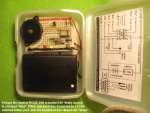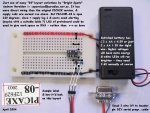Hi,
I am going to place my first order tomorrow for the following:
AXE091U
PUB127 (Programming & Customizing the PICAXE Microcontroller)
As I am not familiar with the entire range of products I thought I should ask if there is anything else that is worth ordering at the same time?
I do not know if I need any more PICAXE chips or connectors or bit and pieces?
Would hate to miss out on something obvious and end up paying postage on a small value item! D'oh!!
Many thanks
I am going to place my first order tomorrow for the following:
AXE091U
PUB127 (Programming & Customizing the PICAXE Microcontroller)
As I am not familiar with the entire range of products I thought I should ask if there is anything else that is worth ordering at the same time?
I do not know if I need any more PICAXE chips or connectors or bit and pieces?
Would hate to miss out on something obvious and end up paying postage on a small value item! D'oh!!
Many thanks



